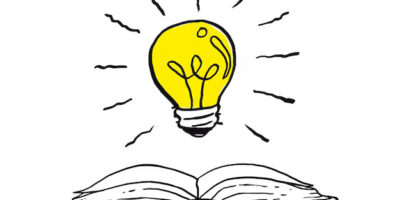The recent federal election has swept in a new reign of totalitarian rule in Canada. Despite a voter turnout of only 61.4%, Stephen Harper’s Conservative majority now has unlimited authority to pull any kind of trick he wants (including using Canadians’ hard-earned money to decorate the parliament lobby with self-portraits). But we digress: the point of this article is not to bash Harper. The point is to determine why Harper got into power with a majority, when only 24.3% of eligible Canadian voters (or 39.6% of people who actually voted) cast the Tory ballot.
Before we start pointing fingers at the people who did not vote, let’s turn our attention to Canada’s pseudo-dictatorial election system. The current method of voting is called “First-Past-the-Post” (FPTP), wherein each citizen gets one, and only one, vote to elect a party of choice. FPTP is inherently flawed for multiple reasons, but it is especially bad in Canada because of the “riding system.” In Canada, each province is cordoned off into multiple electoral districts in which voters elect one member of parliament from the region. At its best, the riding system may provide voters a chance to elect an MP who “knows the region,” but at its worst, it silences the majority of votes and leaves the system vulnerable to gerrymandering, or direct manipulation of the ridings to favour a certain party.
For instance, consider a scenario where there are two electoral districts, each with strong candidates for the Conservatives, Liberals and NDP. Out of a possible 100 votes, Riding One goes for 45% Conservative, 35% Liberal, and 20% NDP, whereas Riding 2 goes for 50% NDP, 45% Liberal, and 5% Conservative. Even though the total number of votes for Liberals is greater when summing both ridings, the Liberals do not get any seats in this situation.
Directly related to this statistical fact is major flaw number two: FPTP inevitably leads to a two-party system. Remember the 2008 election, when a large majority of people thought that the Green Party had the right idea but nobody wanted to vote for them because the chances they would actually acquire a seat was ridiculously low? Such “strategic voting” is the best way to stunt any form of political courage or innovation. Now, instead of voting for the party of preference, individuals are forced to vote for the party that is most likely to win, or worse–vote against a party in fear that the party would get a seat. With strategic voting (a direct consequence of FPTP), any form of multi-party system would essentially be disintegrated into a two-party “lesser-of-the-two-evils” contest. Is it any wonder, then, that in this election, 40% of Canadian voters felt so much apathy and contempt for the political system that they chose not to vote at all?
Fortunately, there are alternatives to the riding system. After all, at the end of the day, these voting problems are mere statistical absurdities that statisticians have long since figured out how to solve. The most feasible of these solutions is proportional representation (PR). Proportional representation challenges the riding system by stating that the number of seats in parliament is directly dependent on the total share of the votes received. The fundamental flaw in the riding system is that the number of seats does not represent the number of votes (e.g. even if one MP only got elected by 45% of the riding, the MP still represents 100% of the votes in that riding). By contrast, proportional voting’s solution is much cleaner and simpler: if one party wins 10% of the population’s votes, the party would receive 10% of the seats in parliament.
PR is not a new idea. It has a proven track record in many developed countries including Germany, Australia, and Japan. Furthermore, these countries have also been found to have a higher voter turnout, a fairer representation of ethnic minorities and decreased election costs for parties and their supporters. In Canada’s case, PR would eliminate the situation of the Tories getting 55% of the seats in parliament when 60% of people voted against them.
Granted, PR has had its fair share of criticism. A popular criticism for PR is that it takes “too long” get things done. Of course, one could extend that argument and say that democracy also takes “too long” to get things done–so why not cut our losses short and switch to a dictatorship instead? PR has also been branded as “too complicated.” Frankly, the insinuation that the PR system is too complicated for a generation of innovators who have conquered small pox, traveled to the moon and developed nuclear war missiles–well, it’s just a little bit insulting.
We have heard people explicitly berate us for our choice of vote (“Okay, who messed up and [did not vote strategically against said party in this riding]?”). We have had friends and families tell us that their vote is “useless” or that “all political parties are corrupt anyway.” The fact is, running an democracy where people don’t feel they have a voice is no better than a dictatorship. If governments want to increase voter turn out and stimulate the amount of input citizens have in the economy, governments need to ensure that the voices of their citizens are actually heard. Perhaps then, the 60.4% percent of people who voted against the Tories won’t have to spend the next four years under the Tory majority.




guest23
People of Ontario resoundingly rejected a proportional representation system for the provincial government…
can't understand why.